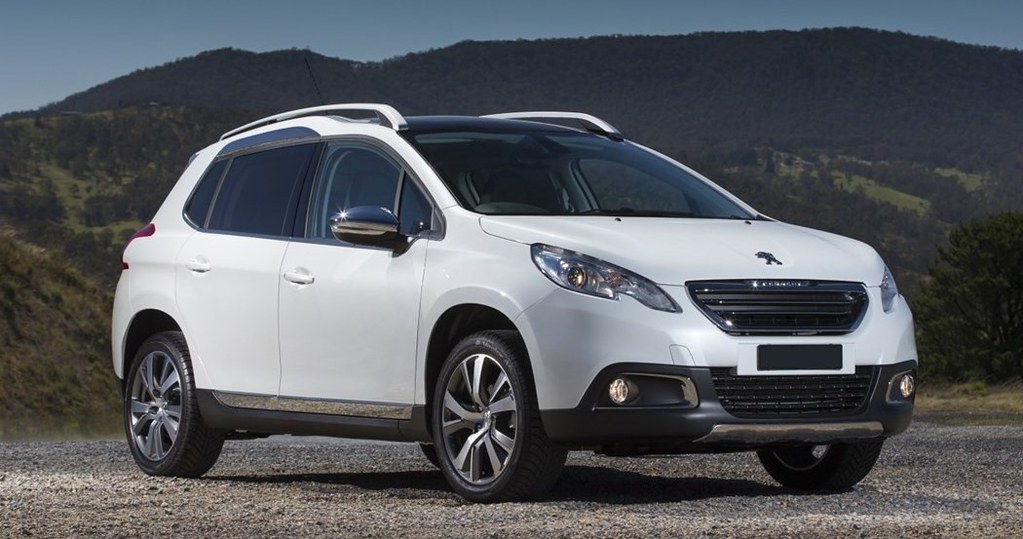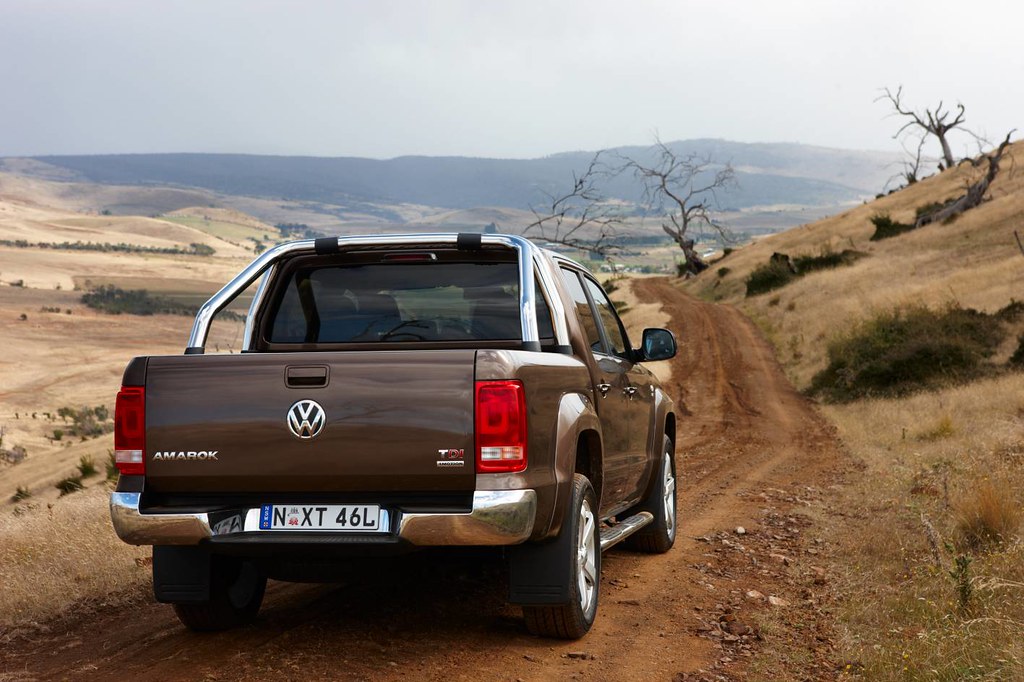
The automotive landscape is undergoing a monumental shift, a transformation driven by the inexorable march toward electrification. Yet, amidst this forward momentum, a fascinating trend has emerged: car manufacturers are looking back, deep into their storied histories, to find inspiration for the vehicles of tomorrow. This isn’t just about retro styling; it’s a strategic resurrection of beloved nameplates, breathing new, electric life into models once thought consigned to the annals of history.
This nostalgic surge isn’t merely a play for sentimentality; it’s a calculated move to capture buyer interest in a rapidly evolving market. With the switch to electrification, a wave of nostalgia has swept through car buyers, prompting brands to dig deep into their archives. The promise is compelling: all the style and character of a classic, combined with the reliability and performance benefits of a modern electric vehicle. It’s an oxymoron that, in practice, offers the best of both worlds, bridging the gap between a cherished past and a sustainable future.
Indeed, these aren’t just one-off concepts or bespoke restomods designed to tease; these are tangible, production-bound vehicles, or those already gracing our roads. From muscle car legends to rugged off-roaders and charming city cars, a diverse array of previously discontinued nameplates are being brought back as EVs or are set to be revived soon. Let’s explore some of the most compelling examples of this trend, starting with those that have made the boldest and most discussed returns.
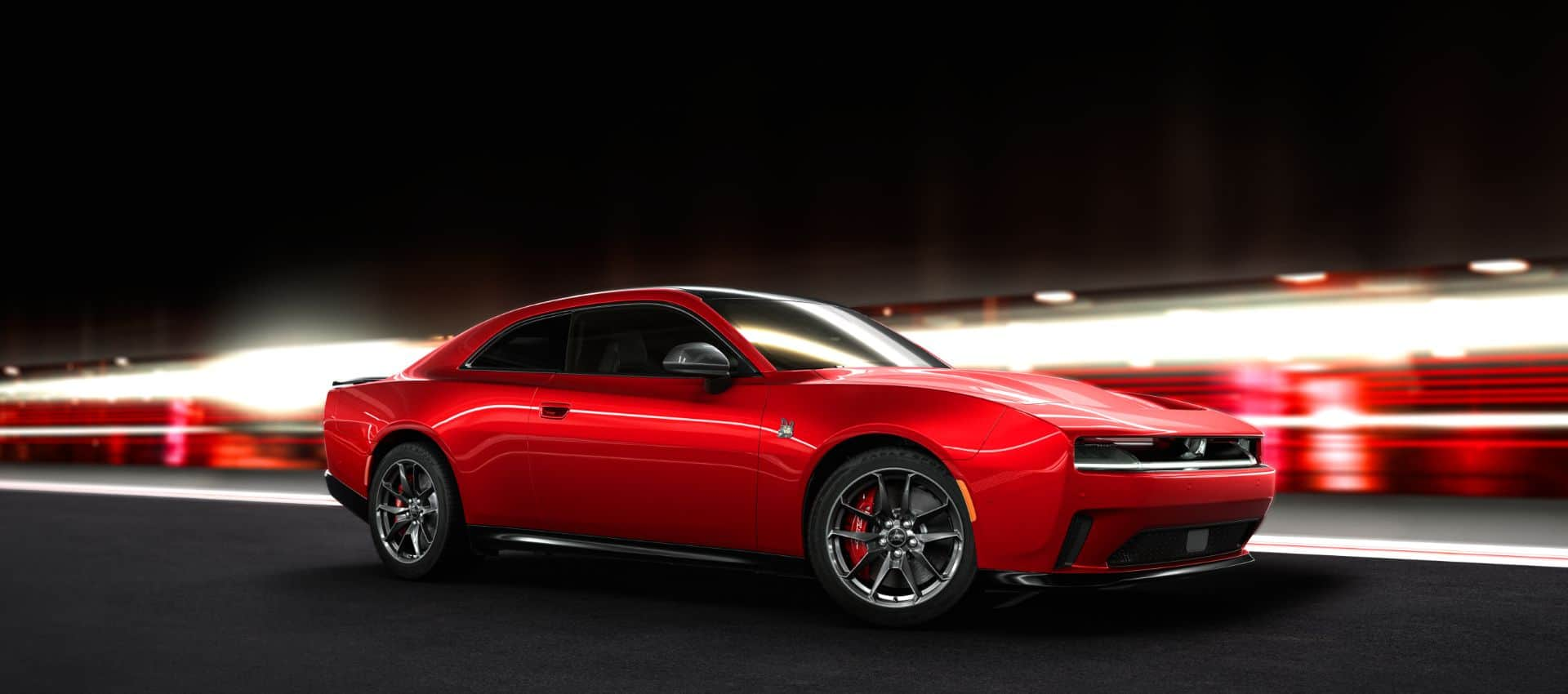
1. **Dodge Charger Daytona: Electrifying an American Icon**The Dodge Charger is a name synonymous with American muscle, a roaring testament to V8 power and raw performance. Its discontinuation in 2023, especially the legendary Hellcat models, left a void that Dodge is now attempting to fill with the electric Charger Daytona. Positioned as the direct replacement, this electric iteration arrives with impressive credentials on both track and road, yet its reception has been anything but smooth sailing.
The challenge for Dodge has been formidable: convincing a loyal fan base, deeply wedded to internal combustion engines, that an electric car could be a worthy successor. Enthusiasts didn’t immediately buy into this idea, leading to a rough start for the electric Charger, which reportedly became the worst-selling car of 2024. This unexpected lack of demand prompted Dodge to accelerate the production of ICE Charger models, with gas-powered six-cylinder variants promised for the second half of 2025, and rumors even swirling about a potential Hemi V8 version.
Despite the initial lukewarm reception and the hurried reintroduction of combustion variants, Dodge has remained steadfast in its commitment to the electric Charger, planning to build both electric and gas-powered models simultaneously. The brand’s electric transition has proven challenging, compounded by current U.S. tariffs that are expected to affect the Canadian-made car. This saga highlights the inherent difficulties in evolving deeply entrenched automotive identities for a new, electric era.
Car Model Information: 2023 GMC Sierra 1500 AT4X
Name: Dodge Charger Daytona
Caption: 1969 Dodge Charger Daytona
Manufacturer: Dodge
Production: 1969–1970,2006–2009,2013,2017–2023
Class: Muscle car
Layout: FR layout
Categories: 1960s cars, 1970s cars, 2000s cars, All articles needing additional references, All articles with unsourced statements
Summary: Dodge produced three separate models with the name Dodge Charger Daytona, all of which were modified Dodge Chargers. The name was taken from Daytona Beach, Florida, which was an early center for auto racing and still hosts the Daytona 500, NASCAR’s premier event. The original Dodge Charger Daytona was designed to beat the competition in NASCAR racing. It was the first NASCAR vehicle to reach 200 miles per hour, which was a major milestone at the time.
Get more information about: Dodge Charger Daytona
Buying a high-performing used car >>>
Brand: Dodge Model: Charger Daytona
Price: $64,995 Mileage: 13,767 mi.

2. **GMC Hummer EV: The Return of the ‘Super Truck’**The Hummer, once a symbol of military might and later, civilian excess, was among the struggling GM brands axed in the wake of the automaker’s 2009 bankruptcy. Its original military iteration, the HMMWV, built by AM General in 1983, became an instantly recognizable icon. GM’s acquisition of the brand in 1999 led to the H1, H2, and H3 models, which capitalized on this formidable image before its eventual demise.
However, in 2020, GM announced the resurrection of the marque, but with a radical twist: the new Hummer would be an all-electric affair. Available both as a pickup truck and an SUV, the Hummer EV promised to retain the original’s larger-than-life personality while ditching its gas-guzzling engines. It might have swapped fossil fuels for electrons, but in most other respects, the revived Hummer adheres closely to the original formula, proving to be ridiculously oversized, impressively capable off-road, and hilariously powerful.
With a staggering 1,000-hp output, the Hummer EV comfortably outperforms rivals like the Cybertruck, making a bold statement in the electric truck segment. Its “Crab Walk” mode, while perhaps more of a novelty than a practical necessity, epitomizes the vehicle’s commitment to attention-grabbing features. This electric behemoth demonstrates how an iconic, if controversial, brand can be reimagined for a new generation, proving that even a once-discontinued nameplate can find a vibrant, electrified future.
Car Model Information: 2023 GMC Sierra 1500 AT4X
Name: GMC Hummer EV
Caption: 2024 GMC Hummer EV3X (SUV)
Designer: Rick Scheer (director of design)
Powerout: 1000 hp
Abbr: on (SUV)
Battery: Ultium
Motor: Ultium Drive
ElectricRange: convert
Height: 79.1 in
Width: 86.46 in
Length: 196.8 in
Wheelbase: 126.7 in
Weight: Convert
Transmission: Single-speed
Related: Chevrolet Silverado EV,Cadillac Escalade IQ
Platform: General Motors BT1 platform
Predecessor: Hummer H2
Layout: Unbulleted list
BodyStyle: pickup truck
Class: Pickup_truck#Full-size_pickup_truck,Full-size SUV
Assembly: Detroit, Michigan
ModelYears: 2022–present
Production: November 2021 – present
Manufacturer: GMC (marque)
Sp: us
Charging: unbulleted list
Categories: All Wikipedia articles written in American English, All articles with unsourced statements, Articles with short description, Articles with trivia sections from November 2023, Articles with unsourced statements from April 2023
Summary: The GMC Hummer EV (badged as HEV) is a line of battery electric heavy-duty vehicles produced by General Motors since 2021, and sold under the GMC mark. The Hummer EV is offered in two variants: a pickup truck and a sport utility vehicle (SUV), unveiled in October 2020 and April 2021 respectively.
Weighing roughly 10,000 pounds (4,500 kg), the Hummer EV is among the heaviest consumer automobiles currently sold in the United States. Its size, mass, and acceleration have led to concerns regarding the danger it poses to other users on the road in the event of a collision, as well as its efficiency and environmental affects.
Get more information about: GMC Hummer EV
Buying a high-performing used car >>>
Brand: GMC Model: Hummer EV
Price: $64,995 Mileage: 13,767 mi.
Read more about: Experts Forecast the Future Resale Value of the Electric 2026 GMC Hummer EV: An In-depth Market Analysis

3. **Scout Traveler / Terra: International Harvester’s Electric Rebirth**Back in 1961, when the original International Harvester Scout launched, the concept of a comfortable, versatile work vehicle was still pioneering. The Scout’s early success played a pivotal role in popularizing the SUV body style, even reportedly inspiring Ford’s Bronco design. Despite a smaller and less-funded design team compared to the Blue Oval, IH continuously refined the Scout’s design, leading to the second-generation Scout II in 1971. However, financial woes ultimately led to the cessation of Scout production in 1980.
For decades, the Scout brand lay dormant, its legacy preserved only in the memories of enthusiasts and the surviving classic vehicles. That changed dramatically in 2021 when VW Group acquired the rights to the name. A year later, Scout was revived as a VW-backed startup, with ambitious plans to build a new all-electric truck and SUV. This revival includes bringing back two historic model names: the Traveler, an SUV, and the Terra, a pickup, both set to redefine modern electric off-roading.
With VW’s substantial financial backing, Scout Motors is expediting the design process and the construction of its South Carolina factory, with production versions of both electric vehicles expected to launch as soon as 2027. This move signifies not just a return for a beloved American off-road brand, but a powerful statement about the global potential for integrating heritage with cutting-edge electric technology, creating formidable rivals to contemporary electric trucks like the Rivian R1T and Tesla Cybertruck.
Car Model Information: 2023 GMC Sierra 1500 AT4X
Name: International Scout
Caption: 1978 Scout II wagon
Manufacturer: International Harvester
Production: 1961–1980
Class: Full-size,SUV
Assembly: Fort Wayne, Indiana
BodyStyle: SUV
Layout: Front-engine, rear-wheel-drive layout,rear-wheel drive
Categories: 1970s cars, 1980s cars, All-wheel-drive vehicles, All articles needing additional references, All articles with dead external links
Summary: The International Scout is an off-road vehicle produced by International Harvester from 1960 to 1980. Created as a competitor for the Jeep CJ, the Scout was the precursor of more sophisticated SUVs, including the Ford Bronco, Chevrolet Blazer, and the later Jeep Cherokee.
Produced for two generations, the Scout was designed as an open-top two-door truck as a base vehicle with options to configure it as a station wagon, half-cab pickup truck, or a soft-top convertible.
International Harvester assembled the model line in its facility in Fort Wayne, Indiana.
Get more information about: International Scout
Buying a high-performing used car >>>
Brand: International Harvester Model: Scout
Price: $64,995 Mileage: 13,767 mi.

4. **Ford Capri: Europe’s Pony Car Goes Electric**The Ford Capri holds a legendary status in Europe, much like the Mustang in America. Launched in 1969, it was Ford of Europe’s answer to the pony car, tailored specifically for European tastes. Across three generations, almost two million examples were sold, cementing its place in automotive history. Despite its popularity, Ford of Europe’s modest development budget eventually led to its discontinuation in 1986, as it lost its competitive edge.
In the decades since its discontinuation, the Capri has maintained a fervent following, frequently appearing at classic car shows and supported by enthusiastic owners’ clubs. Now, Ford has reinvented this classic nameplate as an electric crossover. Unlike the Mustang, however, where the original ICE version still exists alongside its electric counterpart, the new Capri is exclusively electric. This decision represents a significant gamble on the European market’s readiness for an electrified heritage model.
Unfortunately for Ford, it seems buyer demand for the electric Capri was overestimated, as the company announced in late 2024 a scale-back in production for both the Capri and its related electric Explorer due to slow sales. This situation underscores the challenges even established brands face in predicting market shifts and successfully transitioning beloved internal combustion engine models into the electric era, despite the strong historical resonance of the nameplate.
Car Model Information: 2021 Ford Mustang GT
Caption: 1978 Ford Capri Mk3 2.0L
Name: Ford Capri
Manufacturer: Ford of Europe
Production: November 1968 – December 1986
Designer: Philip T. Clark
Class: coupé
Related: Ford Cortina,Ford Taunus TC
Successor: Ford Probe,Ford Puma (sport compact)
Categories: 1960s cars, 1970s cars, 1980s cars, All Wikipedia articles written in British English, All articles with incomplete citations
Summary: The Ford Capri is a car which was built by Ford of Europe from 1968 to 1986. It is a fastback coupé and was designed by Philip T. Clark, who had been involved in the design of the Ford Mustang. It used the mechanical components from the Mk2 Ford Cortina and was intended as the European equivalent of the Ford Mustang. The Capri went on to be highly successful for Ford, selling nearly 1.9 million units in its lifetime. A wide variety of engines were used in the car throughout its production lifespan, which included V6 engines named Essex and Cologne at the top of the range, while the straight-four (Kent) and V4 (Taunus) engines were used in lower-specification models. Although the Capri was not officially replaced, the second-generation Probe was effectively its replacement after the later car’s introduction to the European market in 1994.
Get more information about: Ford Capri
Buying a high-performing used car >>>
Brand: Ford Model: Capri
Price: $34,993 Mileage: 18,085 mi.
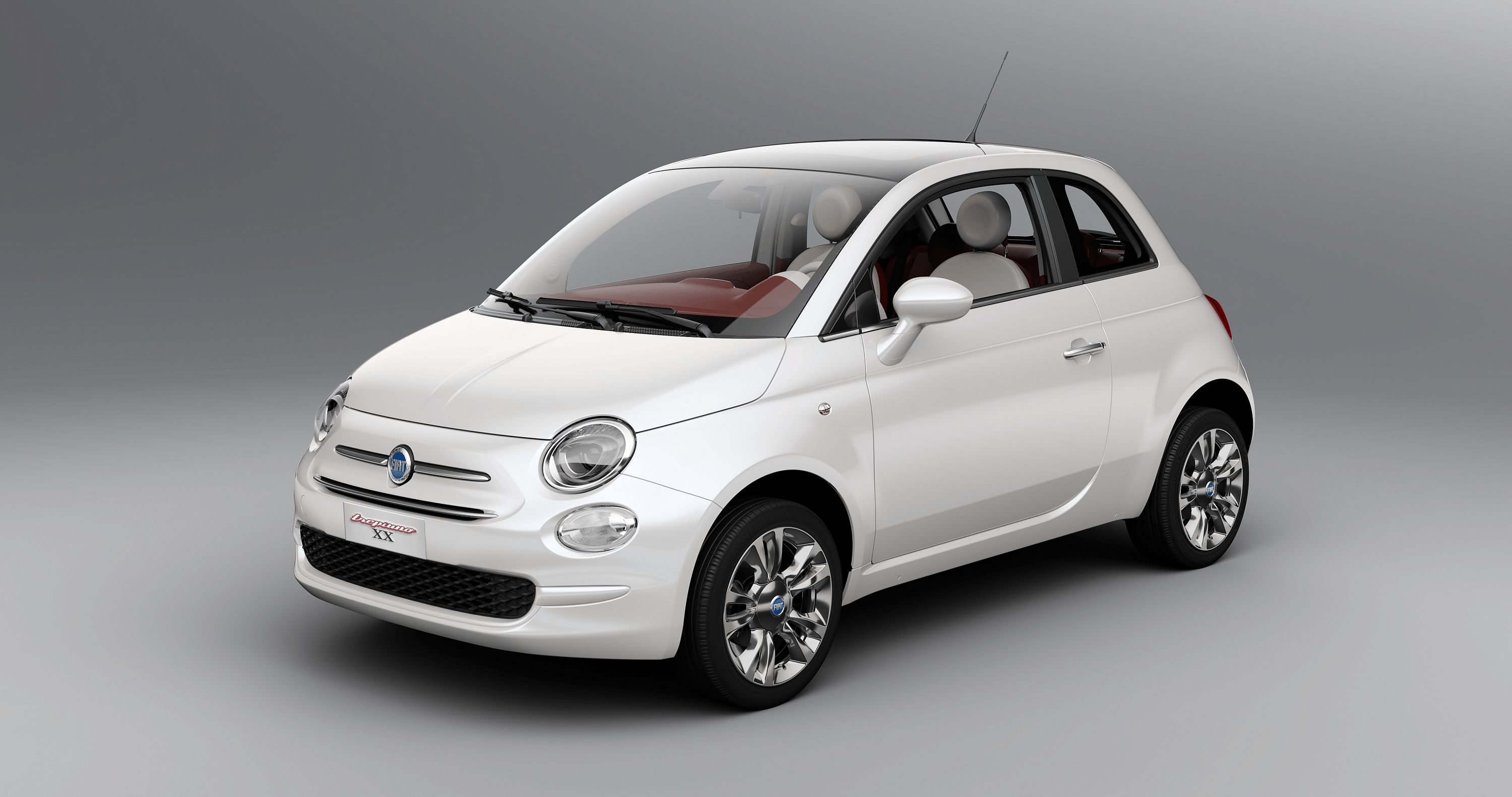
5. **Fiat 500e: A Tiny Icon’s Electric Evolution**Fiat’s modern 500, revived in 2007, was already a retro-inspired success, but the leap to electric was a legislative necessity in some markets. The all-electric 500e was initially introduced to comply with zero-emission vehicle mandates in California and Oregon. Powered by a 24kWh battery, the early 500e could manage a modest 80 miles on a charge, yet it proved surprisingly popular, with an impressive 27,000 units sold before it was replaced in 2020 by a new generation.
The latest Fiat 500e boasts a significantly improved 200-mile range from its 320km (not 320km) 200-mile range. While catering to its core European market, the 500e has also been introduced in the U.S., but like Ford, Fiat has faced unexpectedly low demand for its EVs, necessitating production plan alterations. The previously discontinued gas-powered 500 was replaced by the all-electric 500e, but its slow sales in the U.S. have been a concern.
To boost demand and maintain factory employment in Italy, Fiat has taken an unusual step: re-engineering the all-electric 500e platform to accommodate a gas engine with a small hybrid battery. Pre-production examples of this hybrid 500 were completed in May 2025, with mass production due to start by year-end. While the electric 500e will remain available, Fiat hopes the reintroduction of a combustion-powered 500 will sustain sales until buyer demand for EVs strengthens, demonstrating a flexible approach to market realities.
Car Model Information: 2024 FIAT 500e Base
Name: Fiat 500e (New 500)
Manufacturer: Fiat
ModelCode: 332
Production: February 2020–present
ModelYears: 2020–present
Assembly: Fiat Mirafiori,Turin
Designer: Lorenzo Battisti, Dario Pellegrino at Centro Stile Fiat
Class: City car
BodyStyle: hatchback,cabriolet,4-door hatchback
Platform: STLA City
Motor: GKN Automotive G400 IPMS interior permanent-magnet synchronous motor
Battery: Lithium-ion battery
Powerout: {{cvt,70,kW,PS hp,0
ElectricRange: {{cvt,185,km,0,Worldwide harmonized Light vehicles Test Procedure
Charging: DC:,50nbspkW (24nbspkWh battery),85nbspkW (42nbspkWh battery),400nbspV 3-Phase AC: 11nbspkW,230nbspV AC: 6.6nbspkW,120nbspV AC: 3.3nbspkW
Wheelbase: cvt
Length: cvt
Width: cvt
Height: cvt
Weight: cvt
Predecessor: Fiat 500e (2013)
Sp: uk
Categories: 2020s cars, All Wikipedia articles written in British English with Oxford spelling, All articles with bare URLs for citations, Articles with bare URLs for citations from August 2025, Articles with short description
Summary: The Fiat 500e (project 332), also known as the 500 elettrica or New 500 is a hybrid or battery-electric car by Italian manufacturer Fiat as the third generation of its 500 city cars, following the original 500 (1957–1975) and second-generation 500 (2007–2024). The third-generation 500e is manufactured at the Mirafiori plant in Turin, Italy, starting in 2020, and was sold alongside the second-generation 500, which was manufactured in Tychy, Poland until 2024. It was scheduled to be launched at the Geneva Motor Show but that event was canceled due to the COVID-19 pandemic; it was launched on 4 March 2020 in Milan.
The 500e has a 320 km (199 mi) range on the European WLTP combined test cycle, and achieves 400 km (249 mi) on that test’s urban cycle, which is generally favourable toward electric vehicles (EVs). Most versions of the car are powered by an 87 kW (117 hp) electric traction motor, fed by a 42 kWh lithium-ion battery pack.
Get more information about: Fiat 500e
Buying a high-performing used car >>>
Brand: Fiat Model: 500e
Price: $21,451 Mileage: 1,572 mi.
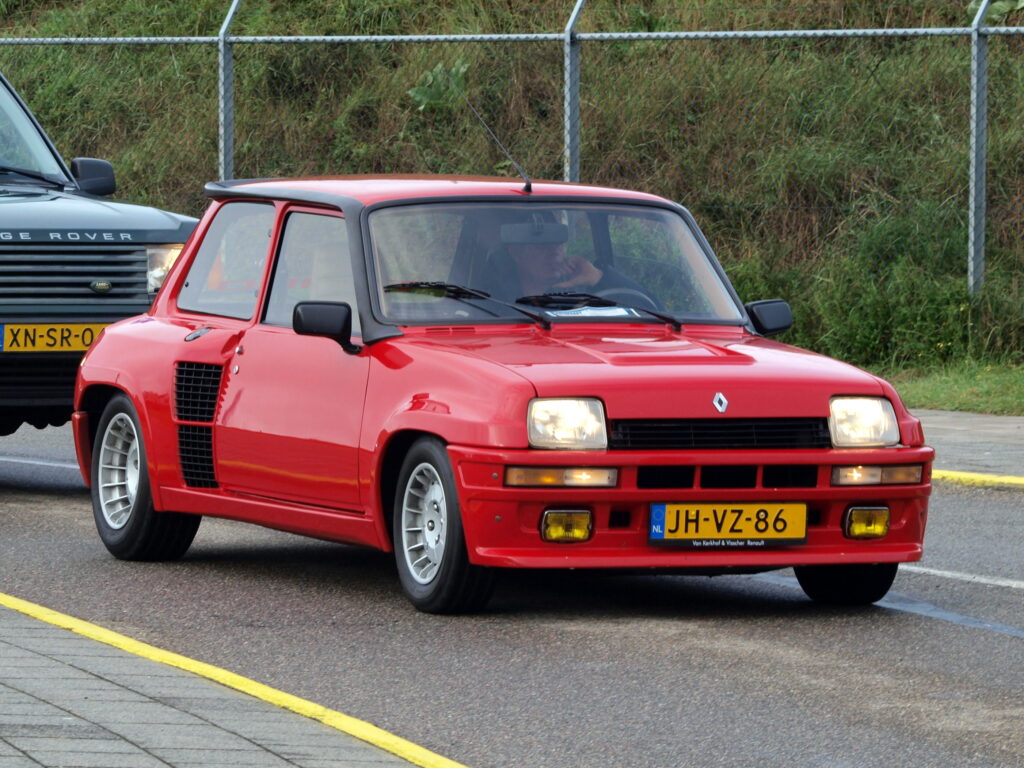
6. **Renault 5: A European Success Story Reborn**In stark contrast to some of its peers, Renault’s revival of its classic 5 city car has been a resounding success. The original Renault 5, first introduced in 1972, was a massive hit in Europe, selling over nine million examples before being effectively replaced by the Clio in the early ’90s. Its simple yet charming design still looks modern today, making it a beloved classic, particularly the sought-after Turbo rallying homologation special in the U.S.
The new electric Renault 5, which garnered significant excitement since its concept reveal in 2021, has lived up to the hype. It has quickly risen to become one of Europe’s most popular EVs, even earning the prestigious Car of the Year award from a pan-European jury of journalists in 2025. This success is attributed to its excellent retro-inspired looks, well-designed interior, a respectable 250-mile range, and engaging handling.
Despite placing billboards in New York in 2024, Renault has no plans for the 5 to return to the American market, acknowledging that its modest 148 horsepower and small size aren’t typically suited for U.S. tastes or highways. However, the success of the new 5 in Europe is a clear demonstration of how a brand can effectively tap into its heritage, combining a beloved design with modern electric technology, to create a vehicle that resonates deeply with its target audience and sets a new benchmark for electric city cars.
The automotive landscape is undergoing a monumental shift, a transformation driven by the inexorable march toward electrification. Yet, amidst this forward momentum, a fascinating trend has emerged: car manufacturers are looking back, deep into their storied histories, to find inspiration for the vehicles of tomorrow. This isn’t just about retro styling; it’s a strategic resurrection of beloved nameplates, breathing new, electric life into models once thought consigned to the annals of history.
This nostalgic surge isn’t merely a play for sentimentality; it’s a calculated move to capture buyer interest in a rapidly evolving market. With the switch to electrification, a wave of nostalgia has swept through car buyers, prompting brands to dig deep into their archives. The promise is compelling: all the style and character of a classic, combined with the reliability and performance benefits of a modern electric vehicle. It’s an oxymoron that, in practice, offers the best of both worlds, bridging the gap between a cherished past and a sustainable future.
Indeed, these aren’t just one-off concepts or bespoke restomods designed to tease; these are tangible, production-bound vehicles, or those already gracing our roads. From muscle car legends to rugged off-roaders and charming city cars, a diverse array of previously discontinued nameplates are being brought back as EVs or are set to be revived soon. Let’s explore some of the most compelling examples of this trend, starting with those that have made the boldest and most discussed returns.
Read more about: Remember These Days? 14 Iconic Manual Transmissions That Vanished Or Are Fading From Our Car Options
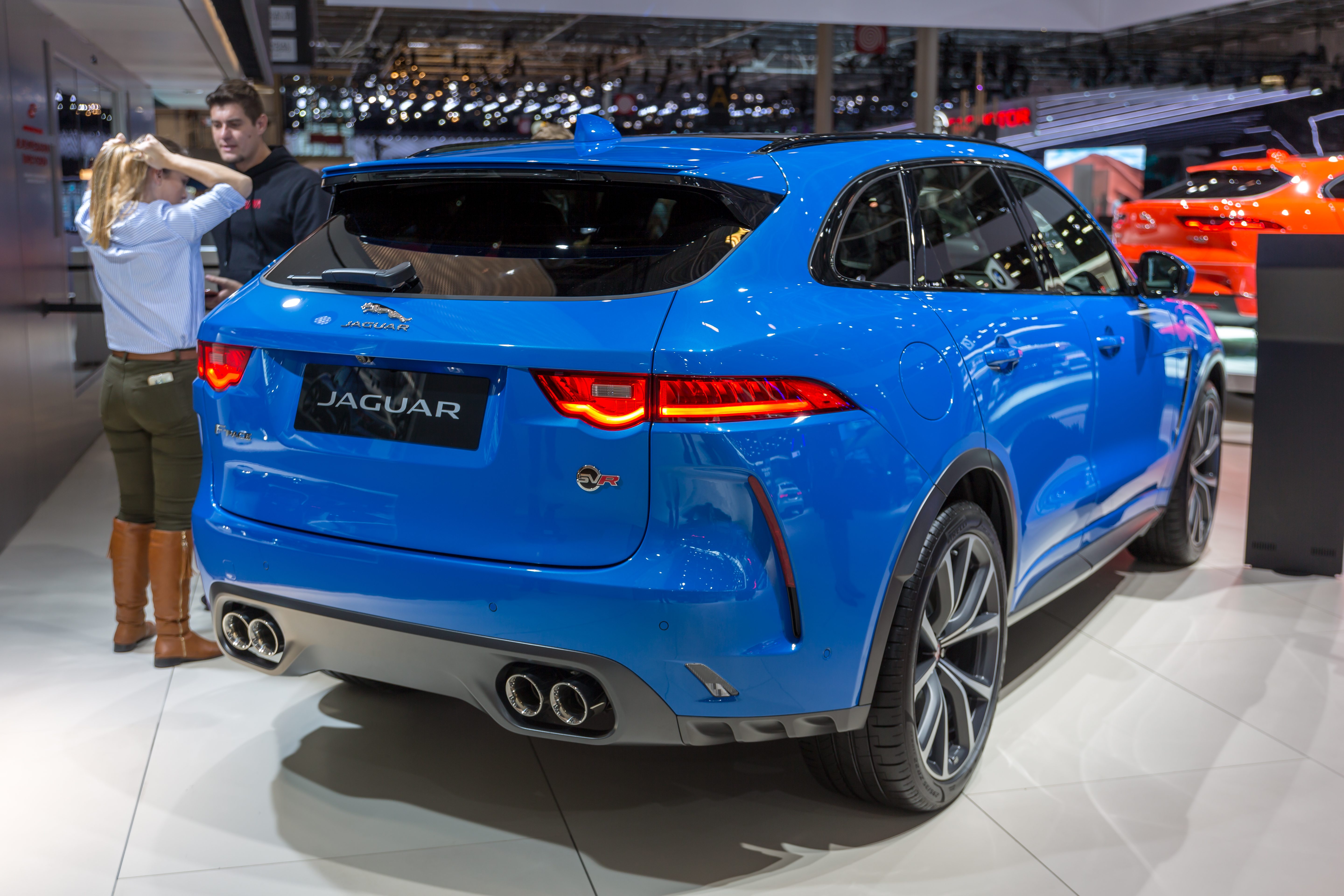
7. **Jaguar Type 00: A Historic Brand’s All-Electric Rebirth**Jaguar, a marque synonymous with luxury and performance, is undertaking an unprecedented transformation: discontinuing its entire existing lineup to pivot towards an all-new, all-electric future. The XE and XF sedans, F-Type sports car, E-Pace, and I-Pace crossovers have already ceased production. Even the F-Pace SUV, the last combustion model, is slated for discontinuation in early 2026. This radical overhaul signifies a profound commitment to electrification, albeit one sparking considerable debate among enthusiasts and critics.
The brand’s wholesale portfolio reset has been described as “endlessly controversial.” While some observers are beginning to embrace the vision behind the recently unveiled Jaguar Type 00 EV, others remain skeptical. Such a drastic transformation is unique for a brand with Jaguar’s heritage, raising questions about how it will maintain its distinctive character and appeal in a purely electric guise, moving away from its traditional internal combustion engine legacy.
Regardless of individual opinions, one undeniable outcome is the immense surge in publicity. The rebrand has effectively “imprinted itself on the minds of the car-buying public” in a way previous generations of models hadn’t. This widespread attention, whether positive or negative, firmly places Jaguar in the spotlight as it navigates this pivotal transition, drawing fresh eyes to its renewed identity and future electric offerings, positioning it as a daring innovator.
The ultimate success of this high-stakes gamble hinges on whether this significant publicity translates into tangible sales and a loyal customer base for its new electric era. The Type 00 will spearhead this charge, carrying the weight of a legendary nameplate into an uncertain yet electrifying future, tasked with redefining what a Jaguar means for a new generation of luxury EV buyers.
Car Model Information: 2023 GMC Sierra 1500 AT4X
Name: Jaguar Type 00
Caption: A front view of the Jaguar Type 00 concept car.
Manufacturer: Jaguar Land Rover
Production: concept car
Designer: Gerry McGovern
BodyStyle: coupé
Platform: Jaguar Electric Architecture (JEA)
Transmission: 1 Speed
Wheelbase: [object Object]
Length: [object Object]
Width: [object Object]
Height: [object Object]
Weight: [object Object]
Sp: uk
Doors: 2
Powerout: 956 HP
Range: 456 miles
Type: Coupé Concept
Categories: All Wikipedia articles written in British English, All stub articles, Articles with short description, Cars introduced in 2024, Coupés
Summary: The Jaguar Type 00 is a Jaguar Land Rover concept car officially revealed at Miami Art Week in December 2024.
Get more information about: Jaguar Type 00
Buying a high-performing used car >>>
Brand: Jaguar Model: Type 00
Price: $64,995 Mileage: 13,767 mi.

8. **Porsche Cayman/Boxster: The Electric Evolution of Mid-Engine Purity**Porsche’s beloved mid-engine sports cars, the Cayman and Boxster, face a significant transition, driven by impending combustion car bans and tightening cybersecurity regulations across Europe. These pressures have led Porsche to globally discontinue both models in their current internal combustion forms. Their replacements will be an electric successor, anticipated to be officially unveiled soon, though a concrete release date remains unconfirmed.
Despite the lack of an official launch, prototype versions of the upcoming electric sports car have been spotted undergoing public road tests, cloaked in minimal camouflage. This visible progress suggests meticulous development, aiming to ensure the electric successor lives up to Porsche’s exacting standards for driving dynamics. Crucially, it has been confirmed that the new electric Cayman and Boxster will sit on a dedicated sports car platform.
This commitment to a bespoke electric platform is a profound differentiator. It signifies that these electric Porsches will not merely be adapted versions of existing electric models but purpose-built machines, engineered from the ground up to preserve the unparalleled driving purity and balance that define the Cayman and Boxster lineage. This approach aims to deliver an authentic Porsche sports car experience, electrified.
Currently, this niche segment of “baby Porsche” sports cars faces limited direct competition, though rivals from brands like Alpine and Caterham are reportedly in development. For U.S. buyers, combustion-powered Cayman or Boxster orders are still being taken, offering a brief window before this iconic chapter definitively closes, marking a pivotal moment in Porsche’s sports car evolution.
Car Model Information: 2018 Porsche 718 Cayman Base
Name: unbulleted list
Caption: Porsche Boxster Spyder (718)
Manufacturer: Porsche
Aka: unbulleted list
Production: unbulleted list
Assembly: unbulleted list
Class: Sports car
BodyStyle: unbulleted list
Related: unbulleted list
Layout: Rear mid-engine, rear-wheel drive layout
Predecessor: Porsche 968
Categories: All Wikipedia articles written in British English, All articles needing additional references, All articles with dead external links, All articles with unsourced statements, Articles needing additional references from August 2025
Summary: The Porsche Boxster and Cayman are mid-engine two-seater sports cars manufactured and marketed by German automobile manufacturer Porsche across four generations—as a two-door, two-seater roadster (Boxster) and a three-door, two-seater fastback coupé (Cayman).
The first generation Boxster was introduced in 1996; the second generation Boxster and the Cayman arrived in late 2005; and the third generation launched in 2012. Since the introduction of the fourth generation in 2016, the two models have been marketed as the Porsche 718 Boxster and Porsche 718 Cayman.
The nameplate Boxster is a portmanteau of boxer, a reference to its flat or boxer engine, and Speedster, a nod to the original Porsche Speedster of the 1950’s. The nameplate Cayman is an alternative spelling of caiman, a member of the alligator family.
In May 2025 Porsche North America confirmed the rumours that global “production for all current 718 Boxster and 718 Cayman variants, including RS models, is scheduled to end in October of” 2025. Porsche CEO Oliver Blume has confirmed future production of full-electric replacements but said they will arrive in the “medium term.”
Get more information about: Porsche Boxster and Cayman
Buying a high-performing used car >>>
Brand: Porsche Model: Cayman/Boxster
Price: $45,248 Mileage: 52,755 mi.

9. **VW ID.Buzz: The Hippie Van’s High-Tech Revival**The Volkswagen ID.Buzz, while technically a new name, is an undeniable and highly successful modern revival of the iconic VW Type 2, known affectionately as the “Hippie Van.” Launched for the 2025 model year in the U.S., it brilliantly merges eye-catching retro aesthetics with a comfortable ride and a spacious, practical interior. This electric van pays homage to its spiritual predecessor, marking a welcome return for the Volkswagen Van nameplate to American shores after the T4 generation (Eurovan) was retired in 2003.
Its estimated 228-mile real-world range, while not groundbreaking for an EV of its size, aligns with its heritage; the original Type 2 was never conceived as a highway-conquering mile muncher. Instead, it was about versatility, community, and relaxed journeys—characteristics the ID.Buzz captures with fidelity. Gas-powered versions have continued in other markets, but the U.S. is receiving the all-electric ID.Buzz, reflecting Volkswagen’s strategic focus on electric mobility.
The ID.Buzz began as a concept that garnered overwhelmingly positive reception, compelling Volkswagen to greenlight its production. Its success stems from versatile design, offering short-wheelbase, long-wheelbase, and cargo van configurations, with a California campervan variant also on the horizon. This adaptability, combined with its charming retro-futuristic appeal, makes the ID.Buzz more than just an electric vehicle.
It’s a statement, a lifestyle choice, and a powerful symbol of how a beloved classic can be reimagined for a sustainable, technologically advanced future without losing its intrinsic soul. It proves that heritage and innovation can coexist, delivering a vehicle that resonates deeply with both nostalgia and modern demands for electric utility.

10. **Citroën 2CV: Mobilizing the Future with Affordable Electric Nostalgia**Citroën reportedly plans to resurrect another automotive legend, the 2CV, as an electric city car, with a production version potentially arriving as early as 2028. This exciting news, initially reported in January 2025 and reinforced by the brand’s confirmation of heritage-inspired models, suggests a strategic embrace of its rich history. The original 2CV, unveiled in post-war France in 1948, was a revolutionary, affordable vehicle designed to mobilize the French population, remaining in production until 1990 and selling over 5 million units.
The original 2CV’s unique blend of tiny, underpowered engines, its “snail-like” design, and ultra-basic construction was famously at odds with American tastes during its brief official U.S. stint in the ’50s and ’60s. Only around 1,000 examples found homes Stateside, highlighting the cultural divide in automotive preferences. Its quirky, utilitarian nature, while a hard sell then, embodied French automotive ingenuity and practical design.
Should the 2CV be revived with its original name, it is unlikely to return stateside due to its modest dimensions and performance. Even in Europe, a new electric 2CV is not envisioned as a high-volume seller. Instead, it forms a pivotal component of Citroën’s strategy: to cultivate lower-volume, attention-grabbing models.
These niche, heritage-inspired EVs are intended to draw significant interest, effectively spotlighting the brand’s core range of crossovers and hatchbacks. By tapping into the 2CV’s legacy of simplicity and affordability, Citroën aims to create an electric city car that is both deeply evocative and perfectly aligned with its vision for accessible, sustainable electric mobility in Europe.

11. **Nissan Micra/March: A Global City Car’s Electric Reimagining**Nissan’s popular city car, known as the March in Japan and Micra elsewhere, has undergone its most radical transformation with the launch of its sixth-generation model in May 2025. This iteration marks a decisive shift: the gas-powered Micra has been discontinued, replaced by an all-new, all-electric model featuring a distinctive retro-inspired design. This move is crucial for Nissan’s drive to reclaim its position as a formidable force in the evolving EV market.
Nissan, a pioneer in the modern EV segment with the original Leaf, has seen competitors gain ground. The new electric Micra, alongside a refreshed 2026 Leaf (with extended range and updated styling, soon in American dealerships), demonstrates a concerted effort to innovate. The latest Micra, blockier and more contemporary, is designed for a younger European audience, drawing inspiration from the rounded lights of the 2002 third-generation Micra, co-developed with Renault.
While the new electric Micra will not reach America, it holds immense strategic importance in bolstering Nissan’s fortunes in key global markets where compact cars are highly popular. It shares underpinnings, drivetrain, and interior infrastructure with the successful new Renault 5, with its appearance being the primary differentiator. This collaborative approach leverages proven electric technology and scale economies.
This strategy allows Nissan to offer a unique aesthetic catering to regional preferences, solidifying its standing in the increasingly competitive electric city car segment. It’s a smart, focused approach that balances heritage-inspired design with modern electric capabilities, emphasizing urban mobility solutions across the globe.

12. **Renault 4: The Practical Icon Gets an Electric Upgrade**In a brilliant move mirroring the success of its resurrected sibling, Renault has also brought back its classic 4 nameplate; both the new electric Renault 5 and 4 share the same CMF-B EV platform. The original Renault 4, a beloved fixture in the French brand’s history, sold over 8 million units worldwide between 1961 and 1992. Its distinctive boxy hatchback design, considered unusual at release, significantly enhanced its practicality, making it ideal for carrying large loads and serving as a reliable workhorse for diverse professionals.
The new electric Renault 4 offers performance and dimensions comparable to the new 5, yet distinguishes itself with a slightly longer wheelbase. This thoughtful design results in a more spacious and accommodating second row, making it a notably more practical alternative for comfortably seating adult passengers or for everyday family use. This focus on interior roominess and versatility caters to a slightly different market segment than its sportier 5 sibling.
Despite the inherent additional weight from its enhanced dimensions and comprehensive electric powertrain, the new 4 meticulously retains an engaging and agile driving experience. This is a testament to Renault’s engineering prowess, skillfully balancing increased practicality and electric propulsion with the brand’s commitment to dynamic handling and ride comfort. The goal is an EV that feels connected and enjoyable, even with its family-friendly capabilities.
Order books for the new Renault 4 have only recently opened in Europe, making it premature to definitively state whether it will achieve the same runaway commercial success as the electric Renault 5. Nevertheless, its compelling blend of retro charm, enhanced practicality, and cutting-edge modern electric technology positions it as a highly promising contender, underscoring Renault’s strategy of leveraging heritage for contemporary, sustainable electric mobility.
Read more about: 12 New Cars Named ‘Best Buys’ for 2025: An Expert Guide for Savvy Shoppers

13. **Microlino: The Urban Revival of a Microcar Legend**The Microlino stands out with a unique approach to automotive nostalgia. Unlike most other models resurrected by original manufacturers, the Microlino is a modern interpretation of the iconic BMW Isetta, brought to life by a Swiss businessman. Unmistakably drawing its charm from the microcar segment’s most recognizable shape, the Microlino was first revealed at the Geneva Motor Show in 2016, instantly capturing attention.
This compact and endearing EV is now in production and available for sale in Europe, specifically engineered as an ideal urban runabout for congested city environments. Its most expensive variant boasts a claimed 141-mile range and a top speed of 56 mph, ample for daily urban commutes. Its primary intention is to effortlessly negotiate bustling European streets where traffic rarely exceeds 20 mph, making efficiency and compactness its core strengths.
Its diminutive size offers a significant practical advantage: it can easily park perpendicularly to the curb in a standard parking space. This innovative parking ability, coupled with its charming aesthetic, highlights a design philosophy centered on maximizing urban utility and convenience, directly addressing the challenges of limited space in dense city settings.
Though legally classified as a quadricycle in Europe rather than a full-fledged car, the Microlino embodies the spirit of innovative, space-saving urban mobility. While some may see it as a “fun novelty,” its faithful reinterpretation of a classic microcar, combined with its efficient electric powertrain and astute urban-centric features, makes it one of the most unique and endearing classic car designs revitalized in the EV era. It proves even small, unconventional concepts find an electrified future.
***
The resurgence of these discontinued nameplates as electric vehicles is more than just a fleeting trend; it’s a powerful testament to the enduring appeal of automotive heritage, seamlessly blended with the cutting-edge innovation of modern technology. From the ambitious spirit of an electric muscle car to the charming efficiency of a city runabout, these revivals demonstrate a profound understanding of what truly resonates with today’s consumers. They offer vehicles that tell a compelling story, evoke cherished memories of a bygone era, and simultaneously deliver on the vital promise of a cleaner, more sustainable future. This fascinating journey through automotive nostalgia unequivocally shows that the past isn’t merely a static guide for the future, but rather a dynamic and vibrant source of inspiration, continuously proving that some legends never truly die—they simply get an electrifying upgrade.

